
Shah Karim al-Husayni, known by the religious title Mawlānā Hazar Imam by his Ismaili followers and elsewhere as Aga Khan IV, is the 49th and current Imam of Nizari Ismailis. He has held the position of imam and the title of Aga Khan since 11 July 1957, when, at the age of 20, he succeeded his grandfather, Sir Sultan Muhammad Shah Aga Khan III. The Aga Khan claims direct lineal descent from the Islamic prophet Muhammad through Muhammad's cousin and son-in-law, Ali, who is considered an imam by Nizari Ismailis, and Ali's wife Fatima, Muhammad's daughter from his first marriage.

Princess Zahra Aga Khan is the eldest child of Aga Khan IV and his first wife, Princess Salimah Aga Khan.

Baitul Mukarram, also spelled as Baytul Mukarrom, is the National Mosque of Bangladesh. Located at the center of Dhaka, the national capital, the mosque was completed in 1968. It has a capacity of more than 42,000 worshippers.

The Aga Khan Development Network (AKDN) is a network of private, non-denominational development agencies founded by the Aga Khan that work primarily to improve quality of life in different regions of Asia and Africa. Aga Khan IV succeeded to the office of the 49th hereditary Imam as spiritual and administrative leader of the Shia faith-rooted Nizari Ismaili Muslim supranational union in 1957. Ismailis consist of an estimated 25 to 30 million adherents.

The Institut du Monde Arabe (IMA) French for Arab World Institute, is an organisation founded in Paris in 1980 by France with 18 Arab countries to research and disseminate information about the Arab world and its cultural and spiritual values. The Institute was established as a result of a perceived lack of representation for the Arab world in France, and seeks to provide a secular location for the promotion of Arab civilization, art, knowledge, and aesthetics. Housed within the institution are a museum, library, auditorium, restaurant, offices and meeting rooms.

Archnet is a collaborative digital humanities project focused on Islamic architecture and the built environment of Muslim societies. Conceptualized in 1998 and originally developed at the MIT School of Architecture and Planning in co-operation with the Aga Khan Trust for Culture. It has been maintained by the Aga Khan Documentation Center at MIT and the Aga Khan Trust for Culture since 2011.
The Aga Khan Academies is an initiative of the Aga Khan Development Network. When fully operational, the Aga Khan Academies network will consist of eighteen co-educational, K-12, non-denominational day and residential schools in fourteen countries in Africa, South and Central Asia, and the Middle East. The academic program is based on the internationally recognized International Baccalaureate curriculum.
The Aga Khan Trust for Culture (AKTC) is an agency of the Aga Khan Development Network (AKDN), a family of institutions created by Aga Khan IV with distinct but complementary mandates to improve the welfare and prospects of people in the developing world, particularly in Asia and Africa. It focuses on the revitalization of communities in the Muslim world—physical, social, cultural, and economic. The AKTC was founded in 1988 and is registered in Geneva, Switzerland, as a private non-denominational philanthropic foundation.
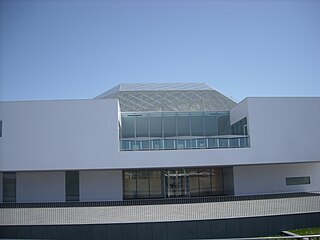
The Delegation of the Ismaili Imamat in Ottawa, Ontario, Canada is representational office of the Ismaili Imamat in Canada and includes the headquarters of the Aga Khan Foundation Canada. It is located between the Embassy of Saudi Arabia and the Lester B. Pearson Building on Sussex Drive. It was opened in 2008.

Šerefudin's White Mosque is a mosque located in Visoko, Bosnia and Herzegovina. It is of great architectural importance to the city and area. The mosque's architect was Zlatko Ugljen, the craftsman was Ismet Imamović, while the contractor was Zvijezda from Visoko. Original mosque was built in 1477, but it was completely reconstructed and finished in 1980. It received its most notable award in 1983, when it received the Aga Khan Award for Architecture. The jury commended the mosque for its boldness, creativity and brilliance, as well as its originality and innovation. In 2007 it received another recognition, this time from Hungarian architects for being one of the three best designed places of worship in Europe.

Rasem Jamal Badran is a Saudi Arabian/Jordanian architect of Palestinian descent whose works are based on a methodological approach in defining Architecture as a continuous dialogue between contemporary needs and historical inherited cultural values.

Superkilen is a public park in the Nørrebro district of Copenhagen, Denmark. The park is designed to bring immigrants and locals together, promoting tolerance and unity in one of Denmark's most ethnically-diverse and socially-challenged communities. Not only is the park a meeting place for local residents, it is a tourist attraction for Copenhagen. Designed by the arts group Superflex with the collaboration of Bjarke Ingels Group and Topotek1, a German landscape architecture firm, the park was officially opened in June 2012. The almost kilometre-long park's name refers to its shape, "kilen" meaning "wedge".
Kashef Mahboob Chowdhury is a Bangladeshi architect.

Saif Ul Haque is an architect and educator based in Dhaka. He received Aga Khan Award for Architecture in 2017-2019 cycle.
Ehsan Khan is a Bangladeshi architect and Urban Designer.
Turgut Cansever was a Turkish architect and city planner. He is the only architect to win the Aga Khan Award for Architecture three times. He is known as "The Wise Architect". He took charge in many towns, zoning, and protected area projects. He designed Beyazıt Square and was the author of the first art history doctoral thesis in Turkey.

Emre Arolat is a Turkish architect. In 2004, he co-founded EAA-Emre Arolat Architecture with Gonca Paşolar.

Prince Amyn Muhammad Aga Khan is the younger brother of Aga Khan IV, Imam of the Nizari Isma'ili sect of Shia Islam. He is the son of Prince Aly Khan and Princess Tajuddawlah Aga Khan.
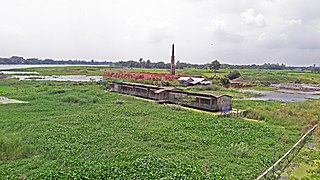
The Arcadia Education Centre (School) is located in South Kanarchor, Bangladesh on the bank of the Dhaleshwari River. The modular, amphibious structure adapts to seasonal flooding using an innovative design based on traditional building techniques and incorporating local materials. The facility contains a preschool, hostel, nursery, and vocational training centre.
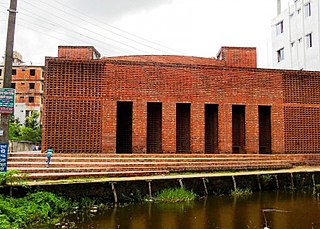
The Bait Ur Rouf Mosque is a distinctive urban mosque located in an economically-challenged area of Dhaka, Bangladesh. Designed by Bangladeshi architect Marina Tabassum and completed in 2012, it has been called a refuge of spirituality in urban Dhaka and received recognition for its beautiful use of natural light and for challenging the status quo of traditional mosque design. Instead of traditional symbolism such as domes and minarets, the mosque relies on open space and the rich interplay of light and shadow to create a prayer space that elevates the spirit.





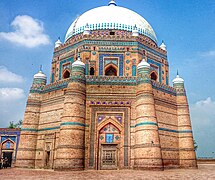


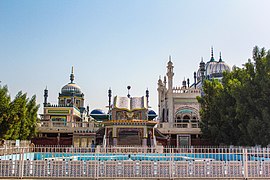







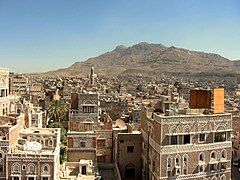


















![a[?] e[?]b annkketttt.JPG](http://upload.wikimedia.org/wikipedia/commons/thumb/2/26/%E0%B4%85%E0%B5%BD_%E0%B4%8E%E0%B5%BD%E0%B4%AC%E0%B5%8D_%E0%B4%85%E0%B4%A3%E0%B4%95%E0%B5%8D%E0%B4%95%E0%B5%86%E0%B4%9F%E0%B5%8D%E0%B4%9F%E0%B5%8D.JPG/320px-%E0%B4%85%E0%B5%BD_%E0%B4%8E%E0%B5%BD%E0%B4%AC%E0%B5%8D_%E0%B4%85%E0%B4%A3%E0%B4%95%E0%B5%8D%E0%B4%95%E0%B5%86%E0%B4%9F%E0%B5%8D%E0%B4%9F%E0%B5%8D.JPG)


























